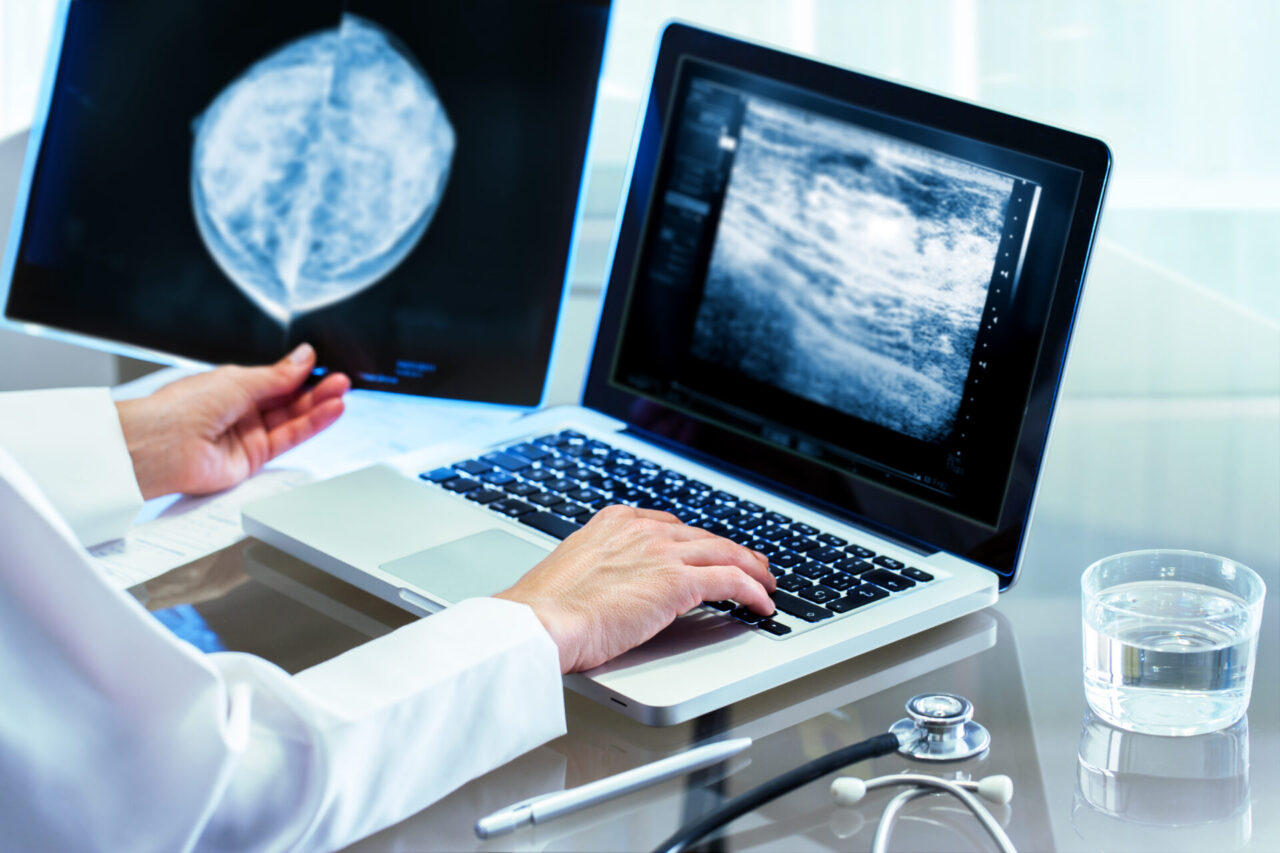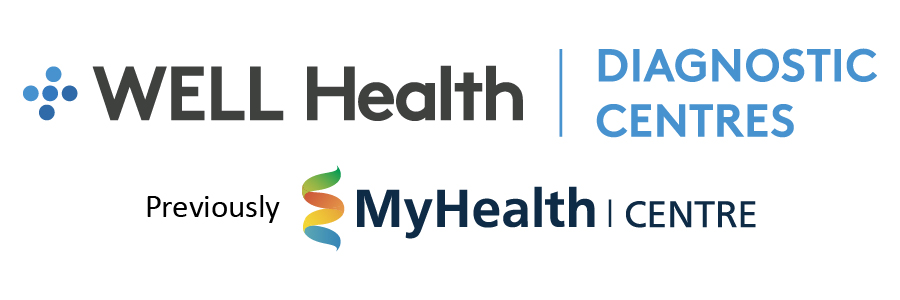Your Essential Guide for Breast Cancer Screening in Ontario
Breast cancer is the most common diagnosis of female cancer, affecting 1 in 8 Canadian women. More than 80% of breast cancers are found in women over the age of 50, and most women who are diagnosed with breast cancer have no family history of the disease.
In this article, we will explore the many facets of breast cancer, the importance of regular breast health examinations, and the reasons why mammography is still the gold standard for detecting breast cancer.
Understanding Breast Cancer and Its Prevalence
Breast cancer claims many lives every day all around the world. It is the most frequent cancer among women in Ontario, which raises serious concerns about public health. According to estimates from the Canadian Cancer Society, there will be over 29,700 new instances of breast cancer in Canada in 2021 alone, with a large share of those cases occurring in Ontario.
The Ontario Breast Screening Program (OBSP) is a comprehensive screening program that the province of Ontario devised in response to the rising incidence of breast cancer. The goal of this program is to identify breast cancer early on when there are more effective treatment choices.
Screening for Breast Cancer
Self-examination is the first stage in a multi-part process called breast cancer screening. Self-examination is an essential initial step in spotting abnormalities, but for a more thorough screening, it’s imperative to follow up with medical professionals.
Regular mammograms play a critical role in the early diagnosis of breast cancer. Early cancer detection can significantly increase treatment options and survival rates, lessening the overall toll that the disease takes on patients and their families.
The Ontario Breast Screening Program (OBSP) advises women between 50 and 74 to have routine mammograms. The gold standard for detecting breast cancer is mammography, which is an X-ray of the breast that can find cancers before a physical examination can feel them. It is a minimally invasive process that is essential to early detection.
Mammography: The Gold Standard
The cornerstone of early identification and screening for breast cancer is mammography. It uses X-rays at low doses to take pictures of the breast tissue. Breast imaging specialists and radiologists examine these pictures, known as mammograms. Anomalies such as tumours, cysts, or calcifications that are visible on mammograms may be signs of breast cancer.
Advantages of Mammography
- Early Detection: Breast cancer can be found with mammograms even in its early stages, frequently before any symptoms appear. The effectiveness of the treatment outcomes depends on this early detection.
- High Accuracy: Mammography is a very accurate way to find abnormalities in the breast. It can distinguish between benign and malignant alterations, which lessens the need for needless worry and medical procedures.
- Screening Interval: The Ontario Breast Screening Program advises women between 50 and 74 to get mammograms every two years. Early detection is more likely when screenings are conducted regularly at the suggested intervals.
- Non-Invasive: Mammography is a non-invasive process involving no incisions or surgery. The process is safe and not too painful.

Beyond Mammograms: Additional Diagnostic Techniques
Although mammography is the primary method for breast cancer screening, other diagnostic methods may be used in certain situations or when more investigation is required, as recommended by the radiologist.
1. Ultrasound of the Breast
Mammography is frequently supplemented with breast ultrasound. It creates pictures of the breast tissue by using high-frequency sound waves. By helping to distinguish between solid masses and fluid-filled cysts, ultrasound can reveal essential details regarding the nature of a breast anomaly. Breast ultrasound is frequently performed when a lump or mass is found during a mammogram or physical examination. Since younger women’s breast tissue may be denser and less amenable to mammography, it is beneficial for evaluating breast abnormalities in these women. Many times, mammography and breast ultrasound will be scheduled at the same time to give the radiologists more opportunity to properly investigate the breast tissue.
2. Magnetic Resonance Imaging (MRI) of the breast
A susceptible imaging method that can reveal specific information about breast tissue is breast magnetic resonance imaging (MRI). It’s frequently utilized in particular circumstances, such as when there’s a significant risk of breast cancer because of genetics or family history.
For women who are at high risk of developing breast cancer, have a strong family history of the condition, or have a known genetic mutation (e.g., BRCA1 or BRCA2), a breast MRI is usually advised. When an ultrasound or mammography result is unclear, it can also be used for additional assessment.
3. Biopsy
A common method for diagnosing breast cancer is a biopsy. A small sample of breast tissue is taken for analysis in a lab. Biopsies can determine whether an anomaly in the breast is malignant and, if they are, can offer vital details regarding the kind and stage of the disease.
Types of Biopsies Include: Core needle biopsy, fine-needle aspiration, and surgical biopsy are the three techniques used to do breast biopsies. The anomaly’s particulars and features determine which biopsy technique is best.
4. Genetic Examination
Genetic testing could be advised for people with known genetic mutations or a strong family history of breast cancer. Specific genetic mutations, such as those in BRCA1 and BRCA2 that raise the risk of breast cancer can be found with these tests. Understanding one’s genetic risk can help with screening and preventative tactics.
To fully understand the consequences of the test results and make educated healthcare decisions, people frequently obtain genetic counselling before having genetic testing.
Breast Cancer Early Signs and Symptoms: What To Watch For
Regular screening for breast cancer is essential, but it’s also critical that women know about any possible early warning signs and symptoms. Treatment outcomes can be significantly impacted by early detection of breast cancer before it is felt or seen on imaging. The following are symptoms and indicators that women should be aware of:
1. Breast Dimpling or Swelling
A lump or thickening of the breast tissue is the most typical early indication of breast cancer. Even though not all breast lumps are malignant, a healthcare professional should examine any new or atypical lump.
2 Noticeable changes to Breast Size and Shape
Investigations should be conducted if one breast noticeably differs in size or shape.
3. Alterations to the Nipple
Evaluation is necessary for any changes to the nipple, including inversion, retraction, and discharge (other than breast milk).
4. Skin Alterations
Any changes to the skin on the breast, such as redness, puckering, or dimpling, should be checked by a medical professional.
5. Edema Around the Collarbone or Underarm
Bellies or enlargements under the arms or around the collarbone could indicate that breast cancer has progressed to neighbouring lymph nodes.
Common Concerns About Breast Cancer Screening
Although screening for breast cancer is an essential part of women’s health, there are some uncertainties and worries. Here are some typical concerns that women can have regarding screening for breast cancer:
1. Pain During the Mammography Process
Women frequently worry about pain or discomfort during a mammogram. Some, not all, patients experience brief discomfort from the breast compression, however mammography is usually a quick procedure that takes only a few minutes.
2. Exposure to Radiation
A small radiation dose is used during mammography to take pictures of the breast. Radiation exposure worries are legitimate, yet the dose used in mammography is incredibly low and regarded as safe. The advantages of early breast cancer detection significantly outweigh the small radiation risk.
3. False Positive and Negative Results
Like any medical exam, mammograms are not flawless. False-positive results, which suggest a possible abnormality that turns out to be benign, might result from them. Additionally, they may yield false-negative results, omitting certain malignancies. For this reason, routine screening and follow-up are crucial.
4. Density of Breasts
Breast density can have an impact on mammography accuracy. False-negative results may be more common in women with thick breast tissue. Further imaging tests, such as MRIs or breast ultrasounds, could be suggested in certain situations.
Process for Breast Cancer Screening
Women need to comprehend the breast cancer screening procedure to feel at ease and knowledgeable when undertaking these crucial examinations. In this section, we will review each breast cancer screening procedure phase with you, stressing its significance at each turn.
1. Self-Examination
The first step in breast cancer screening is self-examination. Regular breast self-examinations are advised for women, usually once a month. In self-examination, one feels the breast tissue for any lumps or irregularities. Although self-examinations cannot replace clinical screening, they enable women to get to know their breast tissue and recognize any changes immediately.
2. Examining the Breast Clinically
A clinical breast examination by a medical professional is the next stage in breast cancer screening. Your healthcare professional will gently feel your breasts and underarms to check for lumps or abnormalities during this examination. Women 40 years of age and older are generally advised to have annual clinical breast exams.
3. Breast Imaging
The mainstay of breast cancer screening is mammography. A mammogram is typically the next course of action if neither the clinical examination nor self-examination reveals abnormalities. The breast is crushed between two plates during mammography to produce X-ray images. Based on their experience in breast imaging, radiologists carefully analyze these images. Under the Ontario Breast Screening Program, mammograms are advised every two years for women aged 50 to 74 (OBSP).
4. Further Imaging (if Required)
Further imaging may be advised if a woman has thick breast tissue or if mammography finds an abnormality. This can involve breast MRIs or ultrasounds. These imaging modalities help distinguish between benign and malignant alterations in the breast tissue and offer more precise information about them, especially when reviewed with the mammogram images.
5. Biopsy (if Required)
A biopsy could be advised if an anomaly is discovered during any screening process. A biopsy is the process of taking a small sample of breast tissue for examination in a lab. This is the only method that can conclusively detect the kind, stage, and likelihood of malignant tissue.
6. Testing for genetics (if indicated)
Genetic testing might be advised in specific circumstances, mainly if there is a significant family history of breast cancer or if there are known congenital abnormalities in the family. Individuals can make educated decisions about their healthcare by using genetic testing to discover particular mutations that raise the risk of breast cancer.
To identify breast cancer in its early and most curable stages, a comprehensive method known as breast cancer screening includes imaging tools, clinical evaluation, and self-examination. Women must participate actively in this process by self-examining, attending clinician visits, and using the suggested screening protocols. Women can increase the likelihood of successful treatment and recovery by prioritizing their breast health and helping with early identification by following these simple measures. Recall that screening for breast cancer is a cooperative endeavour, including individuals and healthcare providers, aimed at safeguarding the health of women throughout Ontario.
Contact My Health Centre for more information about breast cancer screening in Ontario today.
October is Breast Cancer Awareness Month 2022
Did you know breast cancer is the most common diagnosis of female cancer, affecting 1 in 8 Canadian women? More than 80% of breast cancers are found in women over the age of 50, and most women who are diagnosed have no family history of the disease.
In recognition of Breast Cancer Awareness Month, we invite you to book a 20 minute, OHIP-covered breast screening at our nearest location – no referral required for women ages 50-74 as per OBSP Guidelines.
Early detection saves lives, so please forward this message to your friends and relatives, and book your appointment today at MyHealthCentre.ca/Breast-Screening
October is Breast Cancer Awareness Month – 2021
Did you know breast cancer is the most common diagnosis of female cancer, affecting 1 in 8 Canadian women? More than 80% of breast cancers are found in women over the age of 50, and most women who are diagnosed have no family history of the disease.
In recognition of Breast Cancer Awareness Month, we invite you to book a 20 minute, OHIP-covered breast screening at our nearest location – no referral required for women ages 50-74 as per OBSP Guidelines.
Early detection saves lives, so please forward this message to your friends and relatives, and book your appointment today at MyHealthCentre.ca/Breast-Screening
October is Breast Cancer Awareness Month – 2020
Did you know breast cancer is the most common diagnosis of female cancer, affecting 1 in 8 Canadian women? More than 80% of breast cancers are found in women over the age of 50, and most women who are diagnosed have no family history of the disease.
In recognition of Breast Cancer Awareness Month, MyHealth Centre is pleased to provide same-week, OHIP-covered breast screening, mammography, and biopsy appointments at 9 of our accredited diagnostic facilities:
- London Fanshawe – Mammography
- London Wharncliffe – Breast Screening & Mammography
- Milton – Breast Screening & Mammography
- Mississauga – Breast Screening & Mammography
- Newmarket – Breast Screening & Mammography
- Pickering – Breast Screening & Mammography
- Sudbury – Breast Screening & Mammography
- Toronto Bay – Breast Biopsy
In addition to breast diagnostic services, our facilities provide a wide range of OHIP-covered services focused on women’s health:
- Breast Biopsy
- Bone Mineral Density
- Fertility & In Vitro Fertilization
- Gynecology Consultation
- Mammography & OBSP
- Prenatal Screening
- Sonohysterography
- Ultrasound – Breast, Obstetric & Pelvic
October is Breast Cancer Awareness Month
In support of Breast Cancer Awareness Month, MyHealth Centre is hosting our annual MAMMOTHON throughout October! Women ages 50-74 do not need a doctor’s referral, and our OHIP-covered breast screenings take less than 30 minutes!
WHEN: October 1-31
WHERE: The following MyHealth Centres are OBSP-certified mammography sites:
– London Wharncliffe
– Milton
– Mississauga Credit Valley
– Newmarket
– Pickering
– Sudbury Larch
TELL YOUR FRIENDS & RELATIVES: Get the facts and get screened for Breast Cancer Awareness Month! Walk-in patients are welcome, or skip the line and book now!
MyHealth Centre is hosting Mammothons in Milton, Mississauga and Sudbury
In support of Breast Cancer Awareness Month, MyHealth Centre is hosting our annual MAMMOTHON throughout October! Women ages 50-74 do not need a doctor’s referral, and our OHIP-covered breast screenings take less than 30 minutes!
Skip the line and book your appointment today – Tell your friends and relatives too!
Women are 1/3 more likely to die of stroke than men, study finds
A new report says stroke is more deadly for women than men. Robin Gill speaks with Dr. Lara Boyd about the sobering new findings, the symptoms, and what can greatly impact stroke recovery.
LEARN MORE
MyHealth Centre in Sudbury celebrating their 11th annual Mammothon
This Wednesday, June 6th, our Sudbury team is celebrating their 11thannual Mammothon! This one-day breast screening event allows all women ages of 50-74 to simply walk-in for a free, 20-minute mammogram – No appointment or doctor’s referral required. The Mammothon will take place at MyHealth Centre in Sudbury at 65 Larch Street, Suite 103 from 7:30am-4:30pm. Tell your friends and relatives to come too! We’ll have guest speakers, refreshments, door prizes and give-aways throughout the day!

